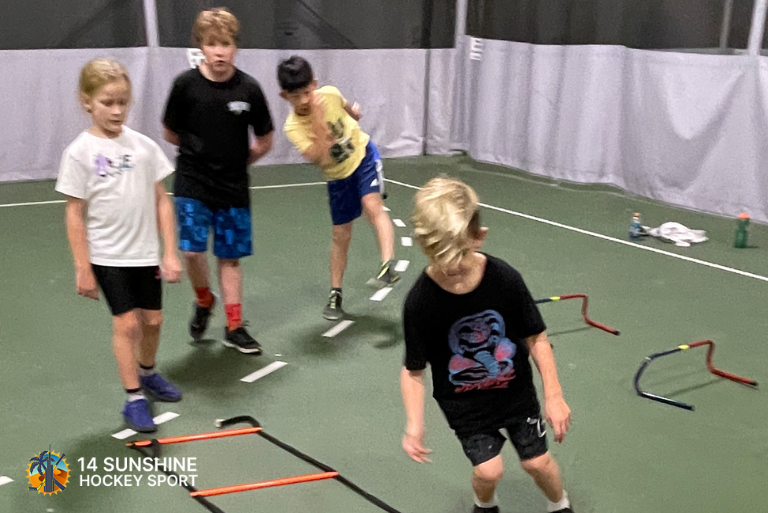Off-Ice Training for Ice Hockey Players: Build Strength and Stamina Year-Round

Ice hockey is a fast and demanding sport. To perform at your best, you need more than just time on the rink. Off-ice training is just as important. It helps you build strength, boost endurance, improve balance, and reduce the risk of injury.
In this guide, we’ll cover the best off-ice training methods for hockey players of all levels. Whether you play in a youth league, adult rec team, or competitive travel team, these tips will help you stay strong and sharp all year long.
Why Off-Ice Training Matters
Hockey is not just about skating. It involves:
- Quick bursts of speed
- Strong legs and core muscles
- Upper-body power for shooting and checking
- Endurance to play hard for three periods
Off-ice training helps improve these areas even when you’re not on the ice. Plus, it allows you to focus on strength and mobility without skates getting in the way.
Strength Training
Building muscle strength is one of the best ways to improve your performance and avoid injury. You don’t need fancy machines — just a mix of bodyweight and free-weight exercises.
Key muscle groups to focus on:
- Legs and glutes: The power behind your skating stride
- Core: Helps with balance, stability, and rotational power
- Upper body: Supports shooting, stickhandling, and checking
Sample strength exercises:
- Squats (bodyweight or with dumbbells)
- Lunges and split squats
- Deadlifts
- Planks and side planks
- Push-ups and pull-ups
- Russian twists or medicine ball throws
Aim to train 2–4 times per week, depending on your schedule and season. Start with light weights and focus on good form before adding resistance.
Cardio and Endurance Training
Hockey shifts are short but intense. You need both short-burst energy and long-lasting endurance to keep up with the game.
Best cardio options for hockey:
- Sprints: Short, high-speed runs to mimic game pace
- Interval training: Mix of fast and slow bursts to train both aerobic and anaerobic systems
- Cycling: Low-impact but great for leg strength and stamina
- Jump rope: Improves foot speed and endurance in a small space
Try this interval workout:
- 30 seconds sprint
- 60 seconds walk or slow jog
- Repeat for 15–20 minutes
Do cardio workouts 2–3 times a week, especially during the off-season.
Agility and Footwork Drills
Quick feet and sharp direction changes are key in hockey. Off-ice agility training helps you stay light on your feet and respond faster during plays.
Try these simple drills:
- Cone drills (zig-zag or T-drill)
- Ladder drills (high knees, in-and-out steps)
- Shuttle runs or suicides
- Lateral bounds or side-to-side jumps
Agility work should be done with short rest periods to build speed and coordination under pressure.
Balance and Stability Work
Hockey players constantly shift weight and balance on a thin blade. Improving your balance off the ice can make your skating more efficient and stable.
Effective balance exercises:
- Single-leg stands (hold for 30–60 seconds)
- Balance board squats
- BOSU ball push-ups or lunges
- One-leg hops or bounds
You can do many of these at home using a pillow, balance pad, or yoga mat.
Flexibility and Mobility Training
Staying flexible helps prevent injuries and keeps your joints moving freely. After tough workouts or long practices, stretching is essential.
Focus on:
- Hip flexors
- Hamstrings and quads
- Calves
- Shoulders and upper back
Try a short routine after training or at night:
- Hold each stretch for 20–30 seconds
- Don’t bounce — ease into it
- Breathe slowly to help your muscles relax
Incorporate yoga or mobility sessions once or twice a week for added recovery.
Stickhandling and Shooting Practice
Not all off-ice training is physical fitness. Practicing stickhandling and shooting at home helps improve your skills, too.
Tools you can use:
- Stickhandling balls or pucks
- Shooting pads or synthetic ice tiles
- Rebounders or passing walls
- Cones for quick-move drills
Practice drills:
- Figure-8 stickhandling between cones
- Quick hands (stickhandle side-to-side as fast as possible)
- Wrist shot, snap shot, and slap shot form
- Passing to a wall and receiving the rebound
Aim for 15–30 minutes a day. Consistent practice improves hand speed, control, and confidence with the puck.
Recovery and Nutrition
Off-ice training works best when paired with good recovery habits. Your body needs time to repair and grow stronger between workouts.
Recovery tips:
- Get 7–9 hours of sleep per night
- Drink plenty of water
- Eat protein and carbs within an hour after training
- Use foam rollers or massage guns for sore muscles
Smart recovery helps you avoid burnout and injuries, especially during intense seasons.
Create a Weekly Off-Ice Plan
To stay on track, build a balanced weekly routine. Here’s an example schedule:
Monday:
- Strength (legs and core)
- Stretching or yoga
Tuesday:
- Cardio intervals
- Stickhandling drills
Wednesday:
- Agility + balance
- Light strength (upper body)
Thursday:
- Rest or mobility work
Friday:
- Strength (full body)
- Shooting practice
Saturday:
- Cardio + stickhandling
Sunday:
- Stretching and recovery
Adjust the plan based on your age, season, and team schedule. During the season, focus more on skill and recovery. In the off-season, train harder to build strength and stamina.
Conclusion
Off-ice training is the key to becoming a stronger, faster, and more complete hockey player. By working on strength, endurance, balance, and skills away from the rink, you’ll set yourself up for success on the ice.
Whether you’re getting ready for the next season or just want to stay sharp, consistent training pays off. All it takes is a plan, a bit of discipline, and a few tools at home or the gym. Put in the work off the ice, and you’ll see the difference every time you lace up your skates.
